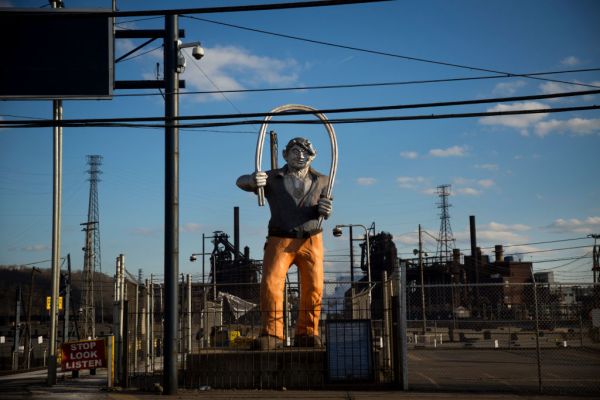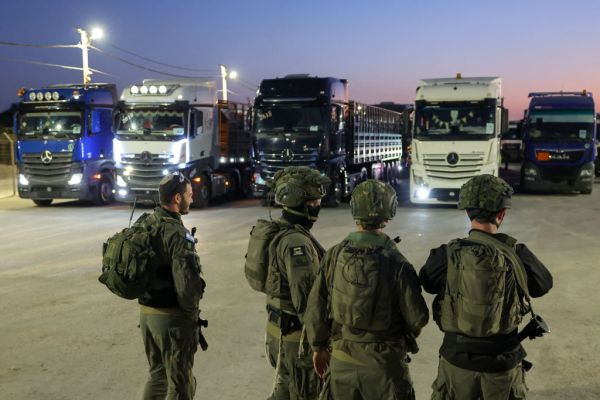Some may have missed the triumphant return to China of Huawei “princess” Meng Wanzhou, the Chinese telecom megalith’s chief operating officer and daughter of its founder and CEO, in the waning days of September. The result of negotiations that began under the Trump administration, Meng’s return to China triggered the reciprocal release of two Canadian hostages arrested close to three years ago by the Beijing government, almost certainly for the express purpose of forcing an exchange.
Meng had been charged with financial fraud (specifically, “conspiracy to commit bank fraud and conspiracy to commit wire fraud, bank fraud and wire fraud”), and was awaiting extradition to the U.S. from Canada; in order to secure her release, she admitted to infractions of U.S. law. The two Canadians were charged with “spying on national secrets” and providing intelligence for “outside entities.” But the details of the case against them are irrelevant, window dressing adorning a larger trend—hostage taking as a tool of statecraft.
There’s little new about sovereign kidnapping. In the book of Genesis, Abraham’s nephew, Lot, is taken by the four kings of Sodom and Gomorrah, requiring the patriarch to gather “318 trained men” and undertake a rescue. Teddy Roosevelt shot to victory in 1904 on the back of a hostage rescue earlier that year, a showdown with the pirate Raisuli and the sultan of Morocco over an “American” kidnapped for ransom. (American is in quotes because later documents revealed the “American” in question was not a citizen, Teddy’s claims notwithstanding.) Jimmy Carter collapsed in defeat in 1980 in some part because of a failed attempt to rescue Americans taken hostage after the Islamic Revolution in Iran.
In short, kidnapping and hostage-taking is a thing. But it is more recently that it has risen from being a tool of terrorists in the modern era to a regularly used tool of governments. And as with many such instruments of coercion, it finds its modern origins in the Islamic Republic of Iran. The most prominent intra-governmental hostage crisis of the modern era began with the overthrow of the U.S.-backed Shah of Iran and the taking of 52 hostages inside the U.S. embassy in Tehran in 1979. The crisis would bring down Carter and usher in an era of U.S.-Iran hostility that continues to this day.
That 444-day hostage crisis kicked off an era of hostage taking centered mostly in the war-torn Lebanese capital of Beirut. And though those kidnappings were horrific, with some Americans held for years, some killed, most were perpetrated by government-backed terrorist groups, not governments themselves. No longer.
The government of Iran now holds four American hostages—Emad Shargi, Morad Tahbaz, and Baquer and Siamak Namazi. Like the U.S. hostages taken and already released—Wang Xiyue (see his Dispatch interview here) and the Washington Post’s Jason Rezaian, Iran’s demands were not specific; these human pawns were leverage, their convictions performance art rather than substantive. None were engaged in espionage; Wang Xiyue was researching 19th century history, Rezaian was the Washington Post’s Tehran bureau chief; the Namazis were businessmen — Baquer Namazi was enticed to Iran to help liberate his son only to be himself arrested — and Shargi was, most recently, a businessman.
Nor has Iranian hostage taking been confined to dual Iranian-American nationals and luckless researchers. In several cases, Iran’s Islamic Revolutionary Guard Corps Navy (IRGC-N) has taken military hostages on the high seas. Nine U.S. sailors and a naval officer were detained in January 2016, Iranian forces seized 15 British servicemen in 2007, three small British Royal Navy boats with eight sailors aboard were taken in 2004.
Never one to shy away from lifting others’ intellectual property, the Chinese government has obviously appreciated the effectiveness of Iranian hostage diplomacy. Nor are the two Canadians who were held, Michael Kovrig and Michael Spavor, alone. Though the Michaels—as they are known—were clearly arrested explicitly for the purpose of securing Meng’s release, others have been taken for more generic leverage purposes. 115 other Canadians remain incarcerated in China, some for legitimate reasons (drug trafficking among them), others for political reasons.Nor have all Beijing’s hostages been arrested; in some instances, the Chinese have “merely” confined their victims inside China, denying exit visas and confiscating travel documents. Estimates suggest that at least two dozen U.S. citizens have been barred from leaving China over the past three years. (Coincidentally, two such American hostages were also released the same weekend as the Michaels and Meng.
Students Cynthia and Victor Liu had been denied exit visas for three years in order to lure their father, a Chinese banker accused of corruption, back to the mainland. Their mother remains in prison on trumped up charges. The Biden administration denies any connection.)
These are the most prominent tales of modern day hostage diplomacy, but others have gotten in on the game as well. The increasingly dictatorial Erdogan regime in Turkey arrested an American pastor, Andrew Brunson, in 2016, on charges so bizarre they appeared a joke (including allegations of connections to an alleged coup plotter because of a picture of a particular rice dish on his phone; a CIA operative—part of a “Mormon gang” inside the intel agency; an Israeli agent; and a “brainwasher” who used the American national anthem to indoctrinate Turkish students). Erdogan demanded the extradition of a political opponent from the United States in exchange. Unusually, he lost that game, and Brunson was released in 2018.
Is there a moral to these stories, a policy lesson for the United States? Indeed there is. In the wake of a rash of kidnappings and terrorist attacks on U.S. troops and the U.S. embassy in Beirut in the 1980s, the Reagan administration imposed a travel ban for American citizens going to Lebanon. Opposed tooth and nail for reasons ranging from the burden on dual nationals to the difficulty of access for aid workers and diplomats, the ban was nonetheless lifted only in 1997. Did it send a message to the Lebanese government about the need to protect American citizens? It did, and despite the continued presence of groups from Hezbollah to al-Qaeda and affiliates, Lebanon is now in general a safer place for Americans to travel. Is the same true of Iran and China?
It may seem an overreaction, but the correct response to a state policy of kidnapping is a travel ban for American citizens and an air travel ban for U.S. carriers. Right now, the Department of State warns Americansnot totravel to Iran due to the risk of kidnapping and arbitrary arrest and to reconsider travel to China due to arbitrary enforcement of local laws. But those warnings are clearly insufficient. If China, Iran, and others view American citizens as pawns to be taken in exchange for policy or political concessions or for human exchanges, it’s time to deny them that option. Will it be hard on U.S. businesses to stop sending Americans to China? Difficult for diplomats and researchers to travel to Iran? You bet. Will it be tough on U.S. carriers who travel routes to China (U.S. carriers are banned from flying to Iran)? Indeed it will. But it will be harder on the perpetrators. That is the price of being a state that behaves like a terrorist group. The choice is theirs, or should be.






Please note that we at The Dispatch hold ourselves, our work, and our commenters to a higher standard than other places on the internet. We welcome comments that foster genuine debate or discussion—including comments critical of us or our work—but responses that include ad hominem attacks on fellow Dispatch members or are intended to stoke fear and anger may be moderated.
You are currently using a limited time guest pass and do not have access to commenting. Consider subscribing to join the conversation.
With your membership, you only have the ability to comment on The Morning Dispatch articles. Consider upgrading to join the conversation everywhere.